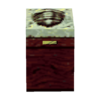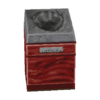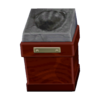Difference between revisions of "Trilobite"
Cephalobot (talk | contribs) m (Text replacement - "Category:Doubutsu no Mori fossils Category:Animal Crossing fossils Category:Doubutsu no Mori e+ fossils" to "Category:Doubutsu no Mori fossils Category:Doubutsu no Mori+ fossils Category:Animal Crossing fossils Category:Doubutsu no Mori e+ fossils Category:Dòngwù Sēnlín fossils") |
|||
| Line 132: | Line 132: | ||
[[Category:Standalone fossils]] | [[Category:Standalone fossils]] | ||
[[Category:Doubutsu no Mori fossils]] | [[Category:Doubutsu no Mori fossils]] | ||
| + | [[Category:Doubutsu no Mori+ fossils]] | ||
[[Category:Animal Crossing fossils]] | [[Category:Animal Crossing fossils]] | ||
[[Category:Doubutsu no Mori e+ fossils]] | [[Category:Doubutsu no Mori e+ fossils]] | ||
| + | [[Category:Dòngwù Sēnlín fossils]] | ||
[[Category:Wild World fossils]] | [[Category:Wild World fossils]] | ||
[[Category:City Folk fossils]] | [[Category:City Folk fossils]] | ||
[[Category:New Leaf fossils]] | [[Category:New Leaf fossils]] | ||
[[Category:New Horizons fossils]] | [[Category:New Horizons fossils]] | ||
Revision as of 21:04, September 22, 2022
| ||||||
| 250px The Trilobite in the museum in Animal Crossing: New Horizons. | ||||||
| Scientific name | ||||||
|---|---|---|---|---|---|---|
| Unknown | ||||||
| Main appearances | ||||||
|
| ||||||
Name in other languages
さんようちゅう
삼엽충 Trilobite Trilobit
三叶虫
Trilobite Trilobites Trilobiet
三葉蟲 Trilobite Trilobites Трилобит | ||||||
The Trilobite is a standalone fossil in the Animal Crossing series introduced in Doubutsu no Mori that appears in all subsequent games to date.
At the museum
In Animal Crossing
In Wild World
In City Folk
In New Leaf
After donating the fossil in New Leaf, its plaque in the museum will read:
"Similar in appearance to a wood louse, the trilobite was an ancient sea-dwelling arthropod. It could range between 4 mm and 70 cm in length, depending on various factors. The trilobite was one of the first creatures to have eyes and the ability to detect enemies and prey."
In New Horizons
As an item
In Animal Crossing
| Trilobite | |
|---|---|
| Sell price | |
| Size | |
In Wild World
| Trilobite | |
|---|---|
| Sell price | |
| Colors | Gray
Brown
|
| HRA genre | Old-school |
| Size | |
In City Folk
| Trilobite | |
|---|---|
| Sell price | |
| Colors | Gray
Brown
|
| HRA genre | Retro |
| Size | |
In New Leaf
| Trilobite | |
|---|---|
| Sell price | |
| Colors | Gray
Brown
|
| Style | Historical |
| HHA theme challenge | Quirky |
| Size | |
In New Horizons
| Trilobite | |
|---|---|
| Interactable | No |
| Sell price | |
| Colors | Beige
Brown
|
| Size | |
Real-world information
Trilobites were one of the earliest groups of arthropods, and one of the most successful groups of early animals. They first appeared 521 million years ago in the Cambrian period, already highly diverse. Their biodiversity, combined with wide geographic ranges and easily fossilized exoskeletons, lend to an extensive fossil record, with over 20,000 species in ten orders described over their almost 300 million years in existence. They suffered a slow decline through the upper Devonian; only four families from the order Proetida survived the Devonian period, and by the end of the Permian, only four genera from two families (Brachymetopidae and Phillipsiidae) remained. These last two families went extinct during the Permian-Triassic extinction 252 million years ago, which was the largest mass extinction in the history of Earth, killing 96% of marine species and 70% of terrestrial vertebrate species.
More information on this topic is available at Wikipedia.
Names in other languages
| さんようちゅう |
||
| 삼엽충 Sam-yeobchung |
||
| 三叶虫 (iQue) |
||
| Trilobiet | Trilobite | |
| Trilobit | Trilobite | |
| Trilobites | Trilobite | |
| Trilobite | Trilobite | |
| Trilobite | Trilobite | |
| Fossils | ||||||||||||||||||||||||
|---|---|---|---|---|---|---|---|---|---|---|---|---|---|---|---|---|---|---|---|---|---|---|---|---|
| ||||||||||||||||||||||||








